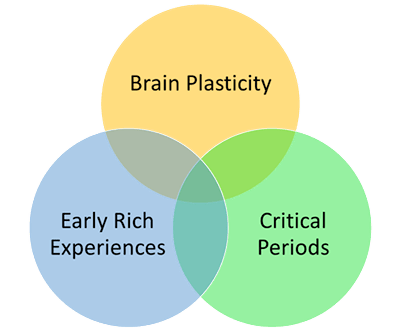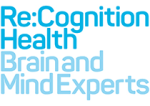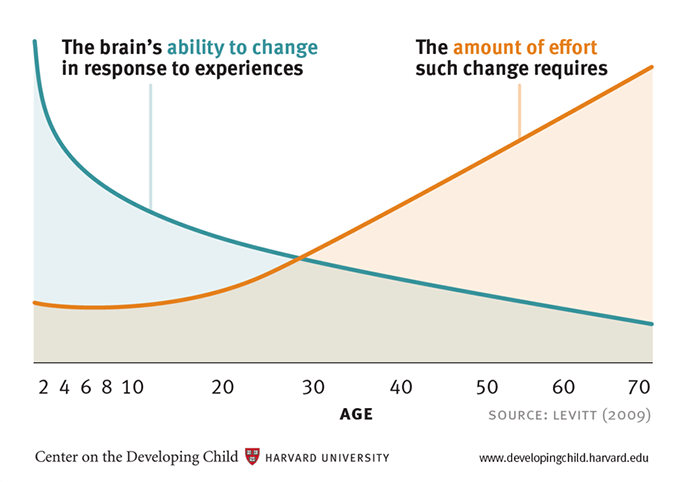By Ifigeneia Mourelatou, Autism Practitioner & ESDM Specialist at Re:Cognition Health
www.recognitionhealth.com
 About Ifi:
About Ifi:
Ifi has a BSc in Psychology and an MSc in Child and Adolescent Mental Health and specializes in early intervention & assessment of infants and toddlers presenting with ASD symptoms.
She has extensive experience in coaching, supervising, and supporting families of children with several different developmental difficulties and conditions. She is certified in interventions including Early Start Denver Model (ESDM), Paediatric Autism Communication Therapy (PACT), and several other assessment tools (ADOS-2, CARS-2 etc).
Access to information
Now, more than ever before, families can have access to information about autism, its research, evidence-based interventions, resources and support in their local community. There are also easy ways to track a child’s development and spot early signs of autism from the first year of life. This can be done using developmental milestones, checklists or apps such as the CDC Milestone Tracker app.
A reliable diagnosis is now possible as early as 18-24 months of age, based on signs initiated during infancy and manifested by the age of three. Earlier diagnosis is supposed to lead to gains, such as quicker access to early intervention services or provision of psychological support, coaching, and genetic counselling for parents.
We now know that the brains of babies and toddlers are highly adaptable and can acquire foundational cognitive, motor, and social skills more easily than older children (see image 1, below). While early identification of autism is more frequent nowadays, attitude changes are still required to ensure that the early signs of autism in young children are acted upon straight away by parents and healthcare professionals.
What is early intervention?
Early intervention is the intervention implemented during infancy and preschool years, so roughly from birth until the 5th year of life. It ‘affords the best opportunity to support healthy development and delivers benefits across the lifespan’, according to charity Autism Speaks. The term early intervention may refer to a variety of different treatment models, some of which may carry more high-quality evidence, while others might only have minimal empirical support.
According to the recently updated NICE guidelines (2021):
“Consider a specific social-communication intervention for the core features of autism in children and young people that includes play-based strategies with parents, carers and teachers to increase joint attention, engagement and reciprocal communication in the child or young person. Strategies should:
– be adjusted to the child or young person’s developmental level
– aim to increase the parents’, carers’, teachers’ or peers’ understanding of, and sensitivity and responsiveness to, the child or young person’s patterns of communication and interaction
– include techniques of therapist modelling and video-interaction feedback
– include techniques to expand the child or young person’s communication, interactive play and social routines.
The intervention should be delivered by a trained professional. For pre-school children consider parent, carer or teacher mediation. For school-aged children consider peer mediation.”
What is the science behind it?
 A growing number of studies demonstrate the critical periods for the plasticity of the young brain – especially during infancy and toddlerhood – in relation to response in early rich experiences, such as the use of early intervention (see image, right). Effective interventions delivered at the right time may be able to alter developmental trajectories and specifically ASD’s course.
A growing number of studies demonstrate the critical periods for the plasticity of the young brain – especially during infancy and toddlerhood – in relation to response in early rich experiences, such as the use of early intervention (see image, right). Effective interventions delivered at the right time may be able to alter developmental trajectories and specifically ASD’s course.
Research indicates that the brain is genetically designed to use learning and experience to regulate genes. In other words, genes and the environment are in a continuous interaction that influences the developing brain.
The term ‘brain plasticity’ refers to the ability of the brain to change following gene-environmental interaction and is seen as both the rationale behind the use of early intervention and the reason why it works better than late intervention.
The term ‘critical periods’ refers to key ages where the brain is more receptive to experiences and stimuli diversity; the younger brain is more ready for activity-dependant regulation, while as the years go by, it becomes more specialized and thus less flexible (see image 1).
Researchers support that one of the most fundamental issues in autism is the inability to engage in social interactions and relationships. Along these lines, the early absence of social engagement associated with autism could have negative consequences on both behaviour and brain level.
However, early intervention intended to improve social, cognitive and language skills may contribute to more normalized brain activity in young children with autism. Hence, early experiences within a social context may be crucial for formulating brain structures to be receptive to the social world, and as a result preventing or diminishing symptoms or even the severity of ASD, leading to better outcomes and better prognosis.
Despite the genetic nature of autism, symptoms can be improved by the combination of brain plasticity and provision of socially enriched experiences during the sensitive period of up to 3 years old of age. Therefore, the goal should be to screen for autism in key ages, make early and timely referrals when required, and initiate high-quality intervention as soon as possible.
What can parents do while waiting for their child’s evaluation?
Even though we now have the knowledge and the tools to diagnose and start intervention early, unfortunately, this is still not the reality for most families. Here is a list of things you can do while waiting for your child’s evaluation:
- Learn more about autism (UK charities, Early Bird training) and get in touch with the autism community, by speaking with families who have gone through the same process and feelings.
- Gather your child’s information as well as your concerns and bring those to your appointment (M-CHAT result, list of missed milestones and any other relevant evidence)
- Don’t ‘Wait and See’ – Start evidence-based intervention as soon as possible. Be guided by science and not the system!
Click here to see Re:Cognition Health’s directory page
References:
Altemeier W. A. & Altemeier L. E. (2009): How can early, intensive training help a genetic disorder? Pediatr Ann, 38(3), 167-70, 172.
Boyd, B. A., Odom, S. L., Humphreys, B. P. & Sam, A. M. (2010): Infants and toddlers with autism spectrum disorder: Early identification and early intervention. Journal of Early Intervention, 32, 75-98. doi:10.1177/1053815110362690
Bradshaw J., Steiner A. M., Gengoux G. & Koegel L.K. (2015). Feasibility and effectiveness of very early intervention for infants at-risk for autism spectrum disorder: a systematic review. J Autism Dev Disord, 45(3), 778-94. doi: 10.1007/s10803-014-2235-2.
Dawson G. (2008). Early behavioral intervention, brain plasticity, and the prevention of autism spectrum disorder. Dev Psychopathology, 20(3), 775-804
Dawson G. & Bernier R. (2013). A quarter century of progress on the early detection and treatment of autism spectrum disorder. Dev Psychopathology, 25(4 Pt 2), 1455-72. doi: 10.1017/S0954579413000710.
Fox, S. E., Levitt, P., & Nelson, C. A. (2010). How the timing and quality of early experiences influence the development of brain architecture. Child Development, 81(1), 28–40
Guthrie, W., Swineford, L. B., Nottke, C., & Wetherby, A. M. (2013). Early diagnosis of autism spectrum disorder: stability and change in clinical diagnosis and symptom presentation. Journal of Child Psychology and Psychiatry, 54(5), 582-590.
Johnson, M. H., Grossmann, T., & Farroni, T. (2008). The social cognitive neuroscience of infancy: Illuminating the early development of social brain functions. Advances in Child Development and Behavior, 36, 331–372.
Levy S. E., Mandell D. S. & Schultz R. T. (2009). Autism. Lancet, 7;374(9701):1627-38. doi: 10.1016/S01406736(09)61376-3.
Matson, J. L., Wilkins, J., & González, M. (2008). Early identification and diagnosis in autism spectrum disorders in young children and infants: How early is too early? Research in Autism Spectrum Disorders, 2(1), 75-84.
Wallace, K. S., & Rogers, S. J. (2010). Intervening in infancy: Implications for autism spectrum disorders. Journal of Child Psychology and Psychiatry, 51, 1300–1320.



















